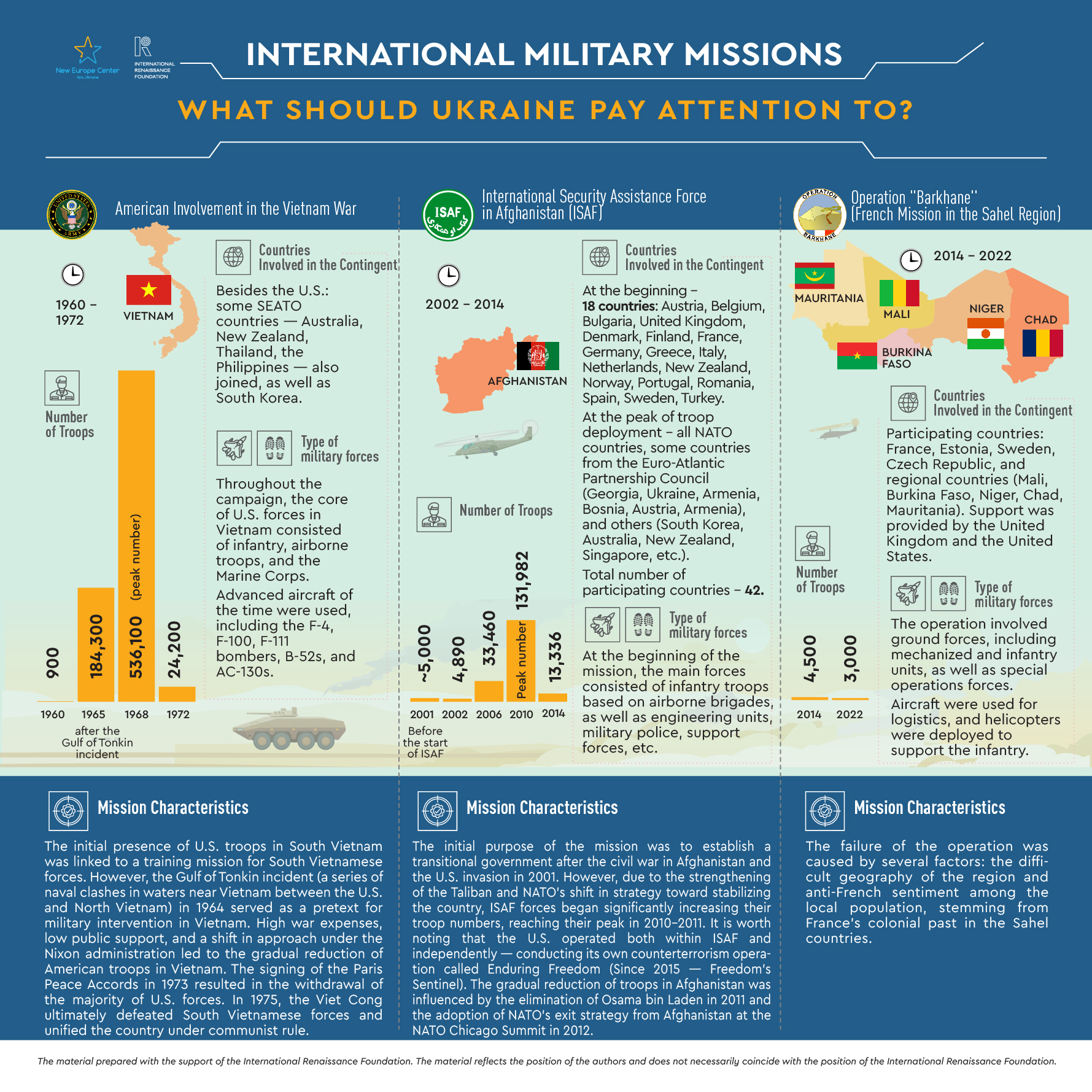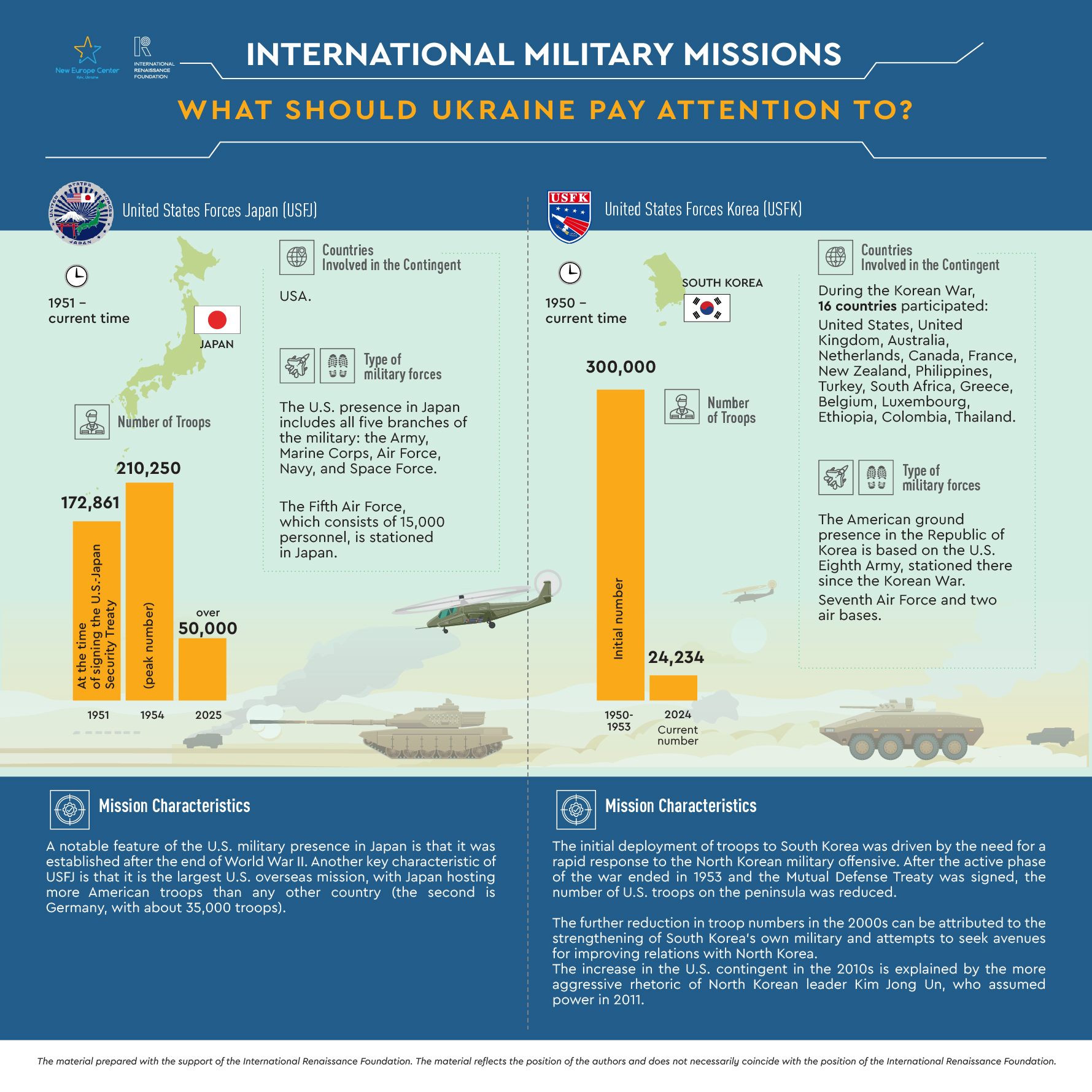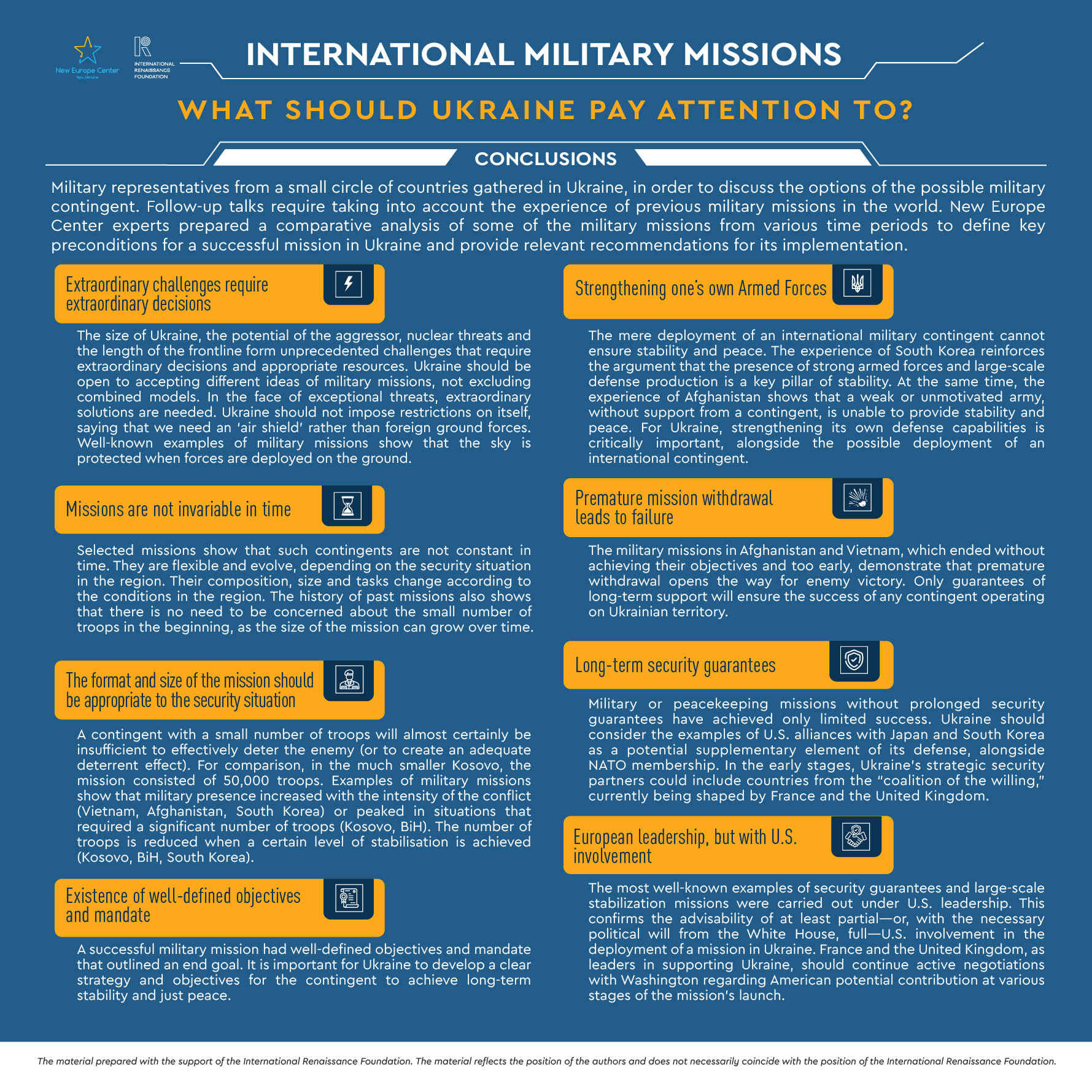Military representatives from a small circle of countries gathered in Ukraine in order to discuss the options of the possible military contingent. Follow-up talks require taking into account the experience of previous military missions in the world.
New Europe Center experts prepared a comparative analysis of some of the military missions from various time periods to define key preconditions for a successful mission in Ukraine and provide relevant recommendations for its implementation.

Conclusions
- Extraordinary challenges require extraordinary decisions
The size of Ukraine, the potential of the aggressor, nuclear threats and the length of the frontline form unprecedented challenges that require extraordinary decisions and appropriate resources. Ukraine should be open to accepting different ideas of military missions, not excluding combined models. In the face of exceptional threats, extraordinary solutions are needed. Ukraine should not impose restrictions on itself, saying that we need an ‘air shield’ rather than foreign ground forces. Well-known examples of military missions show that the sky is protected when forces are deployed on the ground.
- Missions are not invariable in time
Selected missions show that such contingents are not constant in time. They are flexible and evolve, depending on the security situation in the region. Their composition, size and tasks change according to the conditions in the region. The history of past missions also shows that there is no need to be concerned about the small number of troops in the beginning, as the size of the mission can grow over time.
- The format and size of the mission should be appropriate to the security situation
A contingent with a small number of troops will almost certainly be insufficient to effectively deter the enemy (or to create an adequate deterrent effect). For comparison, in the much smaller Kosovo, the mission consisted of 50,000 troops. Examples of military missions show that military presence increased with the intensity of the conflict (Vietnam, Afghanistan, South Korea) or peaked in situations that required a significant number of troops (Kosovo, BiH). The number of troops is reduced when a certain level of stabilisation is achieved (Kosovo, BiH, South Korea).
- Existence of well-defined objectives and mandate
A successful military mission had well-defined objectives and mandate that outlined an end goal. It is important for Ukraine to develop a clear strategy and objectives for the contingent to achieve long-term stability and just peace.
- Strengthening one’s own Armed Forces
The mere deployment of an international military contingent cannot ensure stability and peace. The experience of South Korea reinforces the argument that the presence of strong armed forces and large-scale defense production is a key pillar of stability. At the same time, the experience of Afghanistan shows that a weak or unmotivated army, without support from a contingent, is unable to provide stability and peace. For Ukraine, strengthening its own defense capabilities is critically important, alongside the possible deployment of an international contingent.
- Premature mission withdrawal leads to failure
The military missions in Afghanistan and Vietnam, which ended without achieving their objectives and too early, demonstrate that premature withdrawal opens the way for enemy victory. Only guarantees of long-term support will ensure the success of any contingent operating on Ukrainian territory.
- Long-term security guarantees
Military or peacekeeping missions without prolonged security guarantees have achieved only limited success. Ukraine should consider the examples of U.S. alliances with Japan and South Korea as a potential supplementary element of its defense, alongside NATO membership. In the early stages, Ukraine’s strategic security partners could include countries from the “coalition of the willing,” currently being shaped by France and the United Kingdom.
- European leadership, but with U.S. involvement
The most well-known examples of security guarantees and large-scale stabilization missions were carried out under U.S. leadership. This confirms the advisability of at least partial—or, with the necessary political will from the White House, full—U.S. involvement in the deployment of a mission in Ukraine. France and the United Kingdom, as leaders in supporting Ukraine, should continue active negotiations with Washington regarding American potential contribution at various stages of the mission’s launch.
The material was prepared with the support of the International Renaissance Foundation. The document reflects the position of the authors and does not necessarily coincide with the position of the International Renaissance Foundation.









